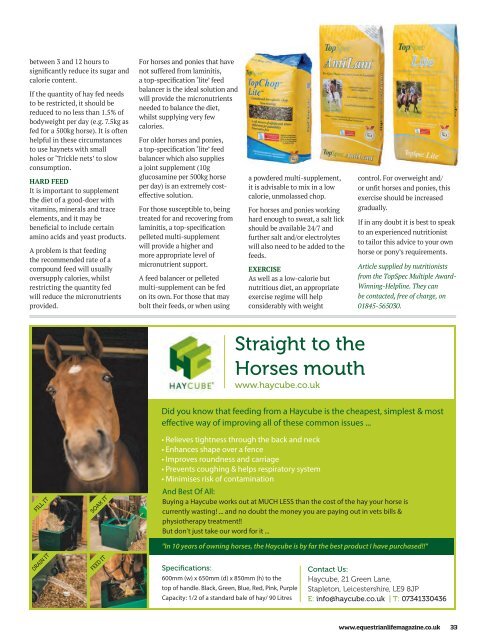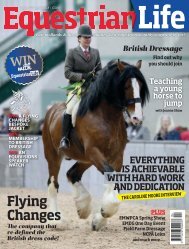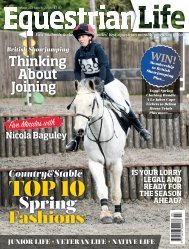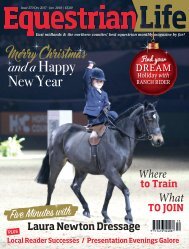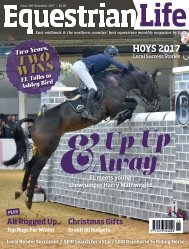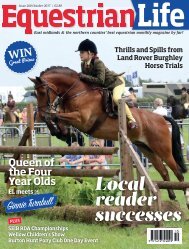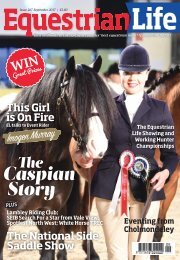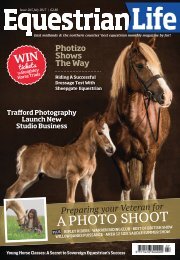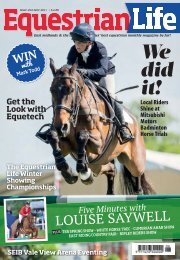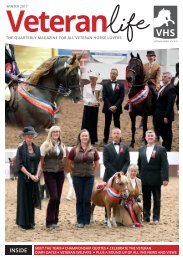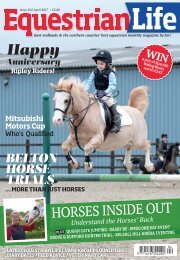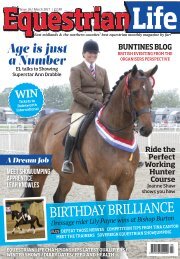Equestrian Life May 2018 Issue
Create successful ePaper yourself
Turn your PDF publications into a flip-book with our unique Google optimized e-Paper software.
etween 3 and 12 hours to<br />
significantly reduce its sugar and<br />
calorie content.<br />
If the quantity of hay fed needs<br />
to be restricted, it should be<br />
reduced to no less than 1.5% of<br />
bodyweight per day (e.g. 7.5kg as<br />
fed for a 500kg horse). It is often<br />
helpful in these circumstances<br />
to use haynets with small<br />
holes or ‘Trickle nets’ to slow<br />
consumption.<br />
HARD FEED<br />
It is important to supplement<br />
the diet of a good-doer with<br />
vitamins, minerals and trace<br />
elements, and it may be<br />
beneficial to include certain<br />
amino acids and yeast products.<br />
A problem is that feeding<br />
the recommended rate of a<br />
compound feed will usually<br />
oversupply calories, whilst<br />
restricting the quantity fed<br />
will reduce the micronutrients<br />
provided.<br />
For horses and ponies that have<br />
not suffered from laminitis,<br />
a top-specification ‘lite’ feed<br />
balancer is the ideal solution and<br />
will provide the micronutrients<br />
needed to balance the diet,<br />
whilst supplying very few<br />
calories.<br />
For older horses and ponies,<br />
a top-specification ‘lite’ feed<br />
balancer which also supplies<br />
a joint supplement (10g<br />
glucosamine per 500kg horse<br />
per day) is an extremely costeffective<br />
solution.<br />
For those susceptible to, being<br />
treated for and recovering from<br />
laminitis, a top-specification<br />
pelleted multi-supplement<br />
will provide a higher and<br />
more appropriate level of<br />
micronutrient support.<br />
A feed balancer or pelleted<br />
multi-supplement can be fed<br />
on its own. For those that may<br />
bolt their feeds, or when using<br />
a powdered multi-supplement,<br />
it is advisable to mix in a low<br />
calorie, unmolassed chop.<br />
For horses and ponies working<br />
hard enough to sweat, a salt lick<br />
should be available 24/7 and<br />
further salt and/or electrolytes<br />
will also need to be added to the<br />
feeds.<br />
EXERCISE<br />
As well as a low-calorie but<br />
nutritious diet, an appropriate<br />
exercise regime will help<br />
considerably with weight<br />
control. For overweight and/<br />
or unfit horses and ponies, this<br />
exercise should be increased<br />
gradually.<br />
If in any doubt it is best to speak<br />
to an experienced nutritionist<br />
to tailor this advice to your own<br />
horse or pony’s requirements.<br />
Article supplied by nutritionists<br />
from the TopSpec Multiple Award-<br />
Winning-Helpline. They can<br />
be contacted, free of charge, on<br />
01845-565030.<br />
www.equestrianlifemagazine.co.uk 33


